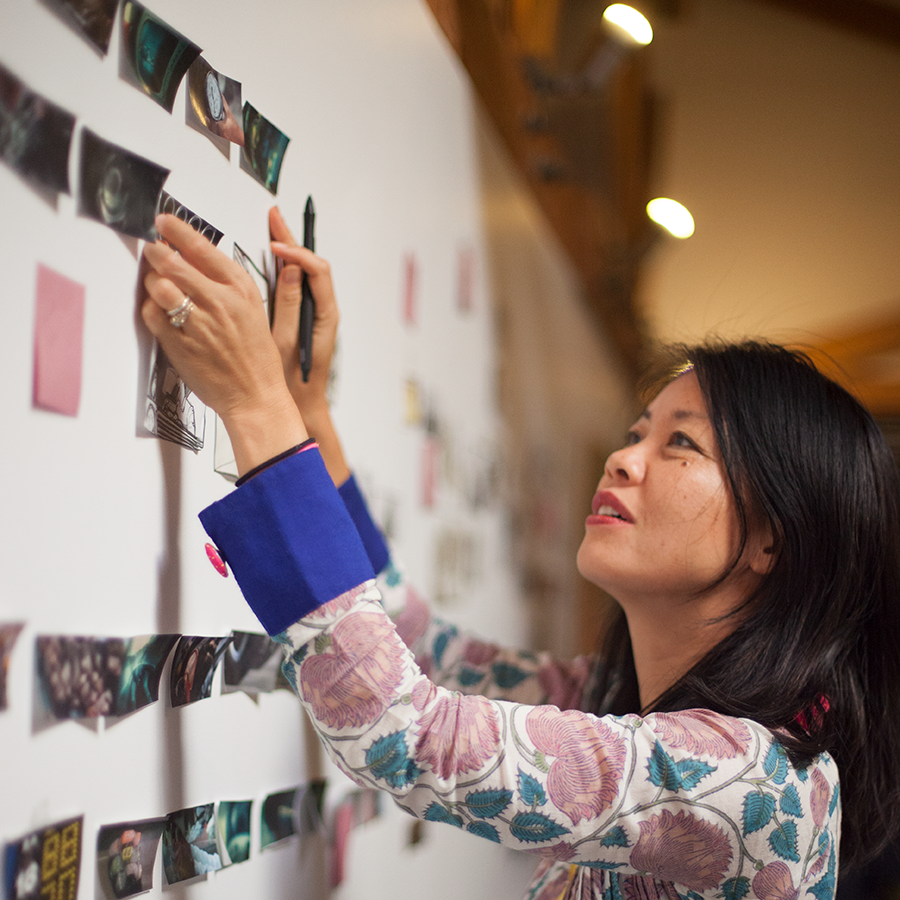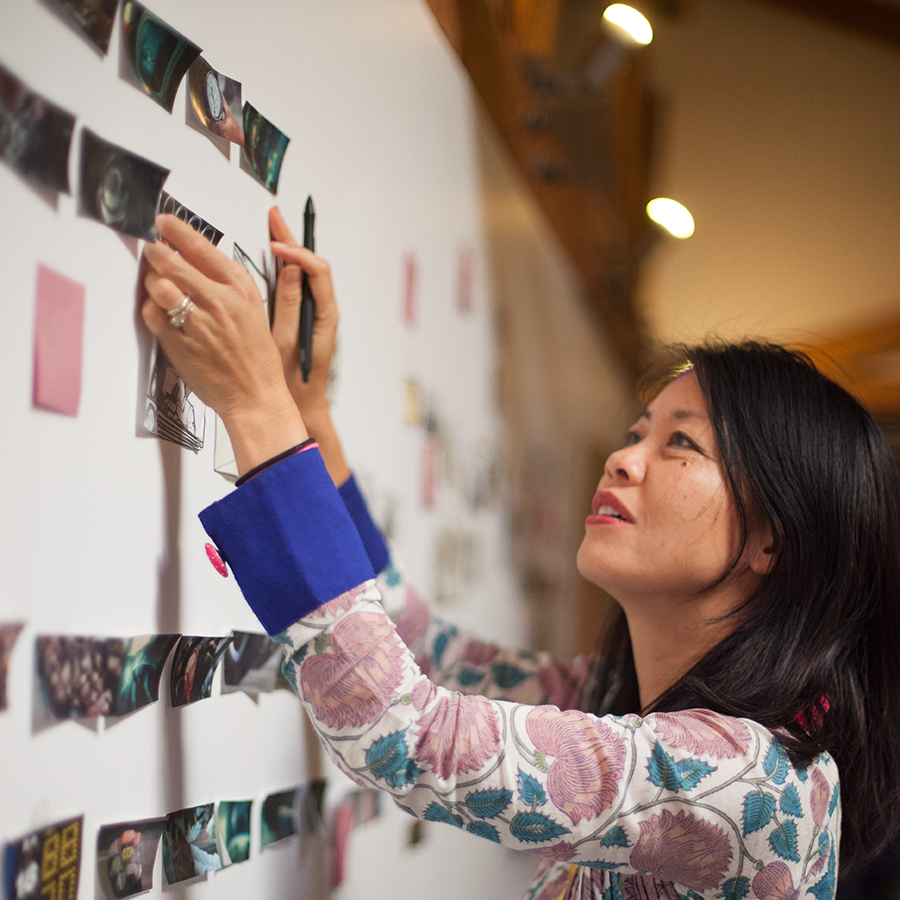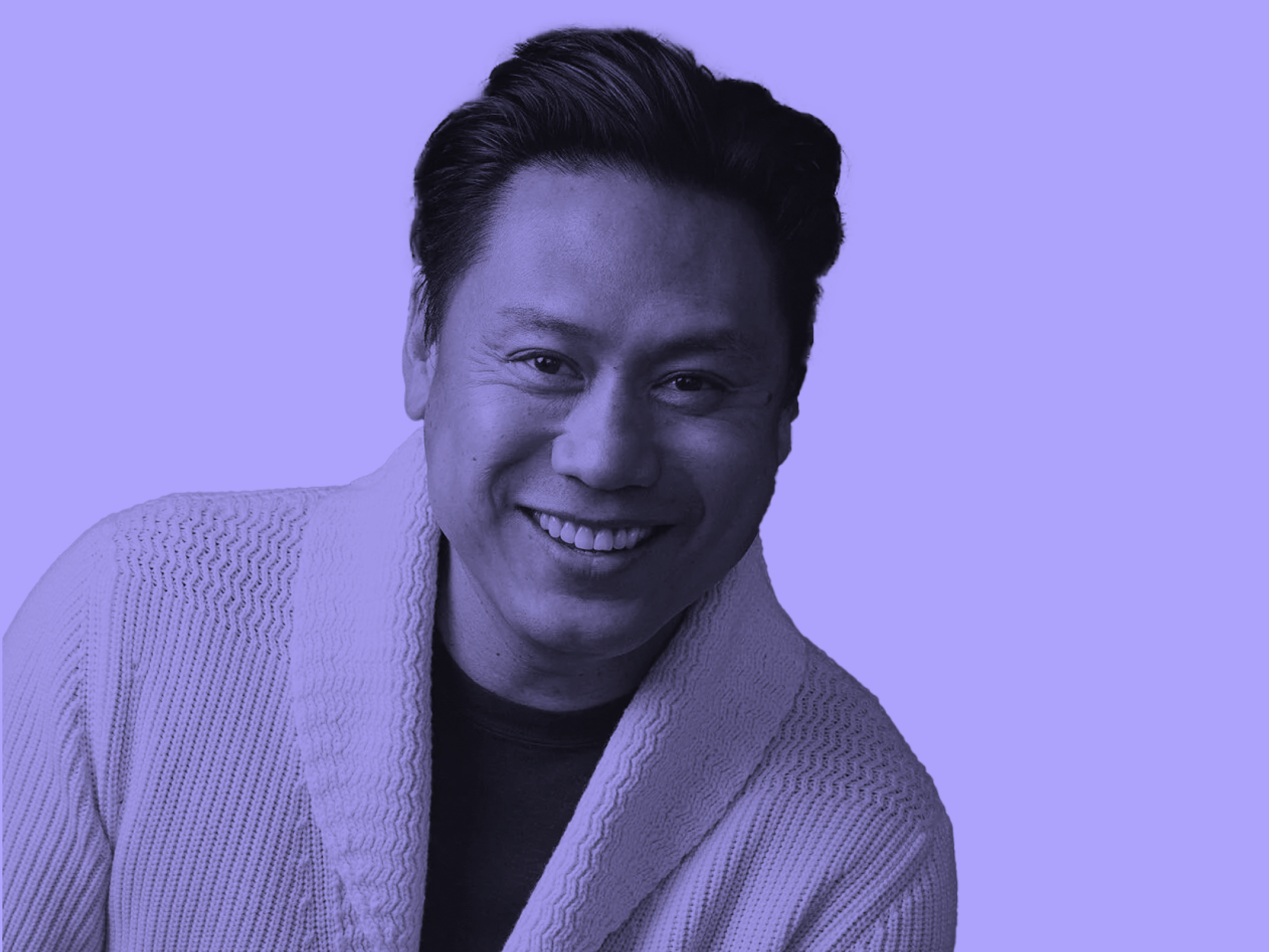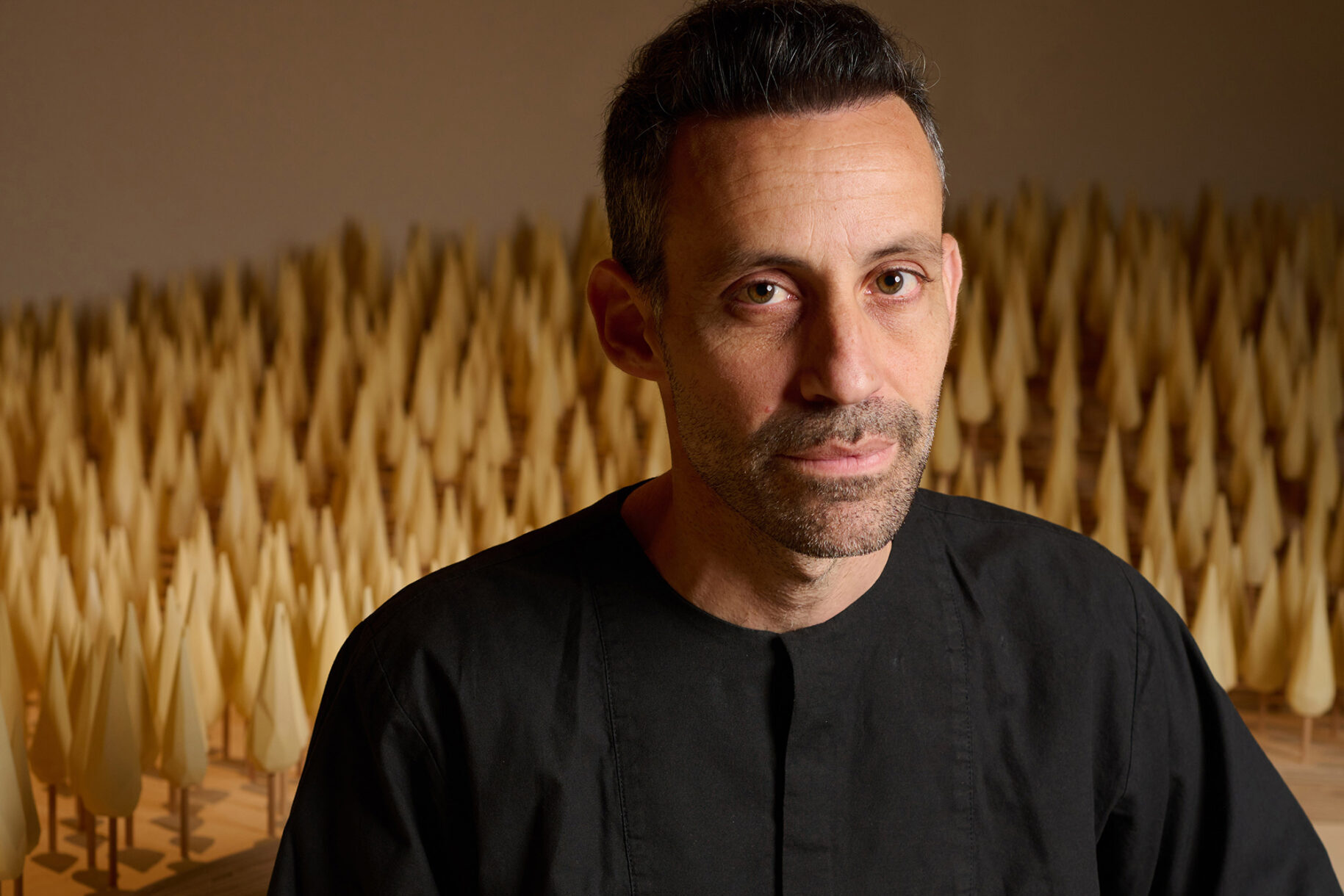
April 11, 2018
Chain Letters: Karin Fong

This interview is part of an ongoing Design Observer series, Chain Letters, in which we ask leading design minds a few burning questions—and so do their peers, for a year-long conversation about the state of the industry.
In April, we celebrate the 2018 AIGA medalists.
Karin Fong is an Emmy-award winning designer and director. A founding member of Imaginary Forces, she works at the intersection of live-action, design, and animation. Among her best-known works are the iconic title sequences for Boardwalk Empire, South Park, and Black Sails, as well as the main titles of numerous feature films. She has helmed spots for major brands, including LEGO, Lexus, Target, Sony PlayStation, Honest, and Herman Miller. From large scale video installations to video game trailers, Karin’s diverse projects showcase her unique voice in visual storytelling.
Imaginary Forces: God of War Trailer from Imaginary Forces on Vimeo.
What do you think is the hardest challenge you’ve overcome in your career?
It’s a constant challenge to frame what we do for different business cultures, especially if what we are proposing doesn’t fit established models. At our studio, we could be working directly with brand; through an agency, network, or tech company; or directly with a filmmaker or showrunner. I myself might take on several different roles, from designer in one project to be being an on-set director on another. The work ranges from concept development and strategy to creating content. The content itself varies from shooting live action to creating animation; from analog methods to the latest in digital.
Variety is a strength but it can be confusing to people who want easy definitions for what exactly you do—are you the type guys? A live-action director? A visual effects company? Graphic? Filmic? Well, it’s all of the above, depending on the project. And often, designing the nature of the project itself is part of the challenge. We like to cross-pollinate and create work that breaks the silos that exist. Since we’re always moving toward new kinds of media and reinventing how we work, I can’t say this challenge will ever be completely overcome.
Is there a piece of advice that has never failed you? What was it?
My sixth grade teacher, Mr. Heck, wrote in my yearbook that going forward life would be a corridor with doors open, and the trick is to try to keep as many doors open as possible as you go down it. I took it to mean that you shouldn’t box yourself in, and in many ways my trajectory has reflected this. My younger self probably wouldn’t have seen the throughline that took me from my fourth grade love of drawing and calligraphy through making cinematic sequences for projects like video games and Las Vegas projections, but in hindsight it makes perfect sense.
STARZ Counterpart Main Title from Imaginary Forces on Vimeo.
I would imagine you’re often called upon to make design decisions. What are you uncertain about?
A bit of uncertainty is good for the design process. I always like it when there’s something that isn’t quite figured out—it leaves some room for surprise, for the project to get better. I would hate to be trapped in the sureness of my own thoughts. To deal with uncertainty, I enjoy a lot of exploration. I like to test and revise. One of the fun things about my work is that I collaborate with teams—editors, animators, cinematographers—and in the best instances they might take a design or an idea and bring it back better than imagined.
A bit of uncertainty is good for the design process. I would hate to be trapped in the sureness of my own thoughts.
When you reflect on your body of work to date, which has the most personal value for you? Why?
I deeply value the experience of the actual making. Two projects pop into mind. First, the title for Boardwalk Empire. Not only was the concept rather surreal, but the day of being on a stretch of beach in New Jersey, shooting Steve Buscemi in a wool suit in the height of summer, as well as being almost nine months pregnant was such a vivid memory. I swear my baby and body were holding out for this shoot. My husband was on set, though he rarely is, in case I went into labor. Having him there was fun, and the whole team was in a flow, bringing this strange idea to life: setting up bottles in the surf, so they could wash ashore.
The second would be the trailer for Sony Playstation’s God of War, where the concept was to show how Kratos, the God of War, suffers from the death of his wife and daughter. This time we were shooting in California, doubling for Sparta. It was uncharacteristically cold and windy, and I was nervous that I wasn’t going to get a good performance from our child actor who had to wear a Grecian sundress. But I managed to give her a pep talk, and I will never know if it was exactly that or not, but to my relief she got over the shivers and was great. The wind created effects no fans could ever match! I also worked with an incredible crew on that set, which shows in the final project. Nose prosthetics, makeup, helmets, and a pile of ashes—everything came together both in the physical, and then later, digital, world.
I think there’s something magical about how a job starts in the studio as you brainstorm and scribble down ideas. Maybe at first it’s a jumbled half-thought, a conversation, some words, a story… and then some time later (sometimes days, sometimes weeks) you’re on location, or on stage, something is constructed or built, and wow, these images become visible to everyone. The projects that allow these moments to happen—those mean the most to me.
If you were going to create an award, what would it be for, and who would be the first recipient?
Just the other day, I was reflecting on how certain jobs don’t call attention to themselves when done well. I was recently reading a script that dealt with 9/11, and it made me think, wow, if someone in security was really stellar you would never hear about it. One doesn’t become a hero in danger averted. There are other jobs in health, teaching, and counseling that are the same: where the heroics are in the steady attention and care that allows others to enjoy quality of life. Our society doesn’t celebrate these kinds of commitments or sacrifices.
I have a fantasy that somehow at the end of it all, these heroes would be at a party, each with a badge of honor recognizing what they’ve done. Maybe some beautiful virtual type would illuminate above their heads or hearts, or a secret tattoo would appear! Anyway, they would be drinking and greeting each other: “Oh, you were the one that made sure that…! ” What a fantastic time that would be, to discover everyone with their good deeds visible.
Imaginary Forces — Boardwalk Empire from Imaginary Forces on Vimeo.
From Deva Pardue, design director at The Wing: How, if at all, have recent political and societal events changed the way you think about and approach your work?
Recent events have really made me think about the value of journalism in its many forms—the value of messages thoughtfully researched, true to the data and facts, and presented with craftsmanship. I had the honor of hearing Dan Rather speak at SXSW and found his activism very inspiring. We don’t have the evening news in the same way anymore; we get our information differently now.
There is so much data being mined. How do we make it useful as a story?
I’m involved with all kinds of storytelling, and it often involves data—notably, documentary films and series. Imaginary Forces recently produced its first full length doc, Sonic Sea, with the NRDC, and we’re constantly involved in creating the sequences and graphic language for other projects. In that context, I think about how we can use our skills to influence policy and really make people understand complex issues in a way that is memorable and entertaining. There is so much data being mined. How do we make it useful as a story: to emotionally engage, make meaning, and ultimately spur action? It’s exciting that short form content will likely become more and more important, and that we designers have the tools to elevate the form.
Next week: Karin asks Apple Creative Director and fellow 2018 AIGA Medalist Arem Duplessis: With which fictional character do you most identify? Why?
Observed
View all
Observed
By Lilly Smith
Related Posts

Design Juice
Rachel Paese|Interviews
A quieter place: Sound designer Eddie Gandelman on composing a future that allows us to hear ourselves think

Design of Business | Business of Design
Ellen McGirt|Audio
Making Space: Jon M. Chu on Designing Your Own Path

Design Juice
Delaney Rebernik|Interviews
Runway modeler: Airport architect Sameedha Mahajan on sending ever-more people skyward

Sustainability
Delaney Rebernik|Books
Head in the boughs: ‘Designed Forests’ author Dan Handel on the interspecies influences that shape our thickety relationship with nature
Recent Posts
Mine the $3.1T gap: Workplace gender equity is a growth imperative in an era of uncertainty A new alphabet for a shared lived experience Love Letter to a Garden and 20 years of Design Matters with Debbie Millman ‘The conscience of this country’: How filmmakers are documenting resistance in the age of censorshipRelated Posts

Design Juice
Rachel Paese|Interviews
A quieter place: Sound designer Eddie Gandelman on composing a future that allows us to hear ourselves think

Design of Business | Business of Design
Ellen McGirt|Audio
Making Space: Jon M. Chu on Designing Your Own Path

Design Juice
Delaney Rebernik|Interviews
Runway modeler: Airport architect Sameedha Mahajan on sending ever-more people skyward

Sustainability
Delaney Rebernik|Books
